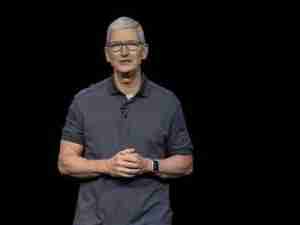Planes, Trains, Autos: A Haven From Mideast Chaos Is On The Move
By: | Jun 29 2016 at 06:00 PM | International Trade
At a trade school next to Casablanca’s airport, trainees are learning how to rivet metal structures. After a 14-week course, they’ll join a nearby Bombardier Inc. plant making fuselage parts. Next door, a group of mostly female students bundle wiring before soldering it to plugs and sockets, skills they will use at a newly opened Latecoere SA factory supplying Airbus.
Morocco is cashing in on its reputation as a safe haven. As militant attacks and political unrest roil parts of North Africa and the Middle East from Turkey to Tunisia, the kingdom is using its proximity to Europe and cheap labor to lure a growing band of investors that also includes car majors.
“It will take me three weeks to open a company here and three years in Algeria” —Nabil Adel, ESCA professor
“Despite a few sporadic Islamic threats, Morocco has appeared to be a beacon of stability in a turbulent” region, said Philippe Dauba-Pantanacce, global political analyst at Standard Chartered Bank. “A growing number of European companies have made it a place of choice to do business across the Mediterranean.”
The jobs they bring are a boon for a system of governance that, while stable for the region, is a work in progress. King Mohammed VI remains the pre-eminent political force even after conceding some powers after the Arab Spring in 2011. He presides over a coalition led by an Islamist party whose popularity has taken a hit ahead of October’s general elections because of spending cuts. Most parties would like the monarch to yield more powers, yet none openly questions his authority.
Confidence Vote
Morocco isn’t immune to regional upheaval. Several hundred Moroccans joined Islamic State and police occasionally break up terrorist cells. In 2011, a bomb killed 17 people at a Marrakech restaurant.
But there’s been no major attack since, and business has thrived. Foreign direct investment has risen more than 11 percent since 2010 to 39 billion dirhams ($4 billion) last year. By contrast, FDI to Egypt and Tunisia remains well below the pre-2011 levels, according to World Bank data.
The kingdom has maintained its investment-grade credit rating at S&P Global Ratings and Fitch Ratings. Morocco’s credit risk has been largely stable this year while default swaps for Tunisia have climbed, according to data compiled by Bloomberg.
It’s a vote of confidence in Morocco, even as its economy faces a few headwinds. Agricultural output is expected to contract 9 percent this year hit by drought, and textile companies are under pressure from Chinese competition. Still, the central bank expects non-farm growth to accelerate to 3.2 percent in 2017 from 2.8 percent this year.
Nabil Adel, a professor at management school ESCA, says Morocco’s business environment put neighbors in the shade. “If I want to open a company, it will take me three weeks here and three years in Algeria,” he said. “There’s no comparison.”
The government is building a high-speed train link from Casablanca to Tangier, and expanding the port in Tangier, which by next year should be the fourth-largest container terminal outside Asia. It hopes both will propel a shift that in 2014 saw the automobile industry overtake phosphate mining as Morocco’s top exporter. Aerospace has been growing by more than 10 percent a year.
Female Workers
Alcoa Inc. in May inaugurated a 200-employee factory near Casablanca to make aluminum fixtures for airplanes. On the same day in January, Hexcel Corp. announced plans for a plant in the same coastal city to build fuselage parts, and Switzerland’s TE Connectivity Ltd. said it’s building a cables assembly plant in Tangier.
“There’s no reason recent growth shouldn’t continue,” said Hamid Benbrahim El-Andaloussi, president of GIMAS, which groups Morocco’s aeronautics companies. “Western Europe has a competitivity problem and we are the closest competitive base.”
From almost none 10 years ago, about 12,000 Moroccans—50 percent of them women—work in the aerospace industry, and Benbrahim expects that to rise to 35,000 by 2020. IMA graduates earn just under 3,000 dirhams a month in their first jobs. France’s minimum wage is about five times as much.
Casablanca’s Institute of Aeronautic Trades, or IMA in French, is helping to supply the workers. It will produce 800 graduates this year, more than double the number in 2015, according to director Patrick Menager. The school is only five years old, yet construction crews are building an extension and by 2020, 1,200 students a year should be graduating.
Morocco’s car industry is also growing. PSA Peugeot Citroen last June announced plans to invest 557 million euros in a factory north of Rabat that should produce 90,000 vehicles a year from 2019. Renault SA in 2015 made 288,000 cars at its two Moroccan plants, up an annual 26 percent. Almost 90 percent were exported.
Morocco traditionally exported phosphates, winter fruits and textiles. Then in 1999 Delphi Automotive Plc arrived near Tangier. The firm now has three units employing 12,350 people, mostly supplying electrical systems to European car makers.
‘Jobs Waiting’
Others followed and fostered supply chains. After Renault built its second factory in 2012 near Tangier, car-part makers Valeo SA, Takata Corp. and Snop invested nearby. Cars and their parts make up a quarter of all overseas sales, and Morocco is now the continent’s second-largest constructor behind South Africa, employing 90,000 people directly.
Back at IMA, where the government pays for tuition costs, Menager receives two or three visits a week from companies considering Morocco.
Even though classes run from 7 a.m. until midnight, “the only brake on our activity is space,” he said, pointing to the construction site. “Everyone of my students already has a job waiting.”

